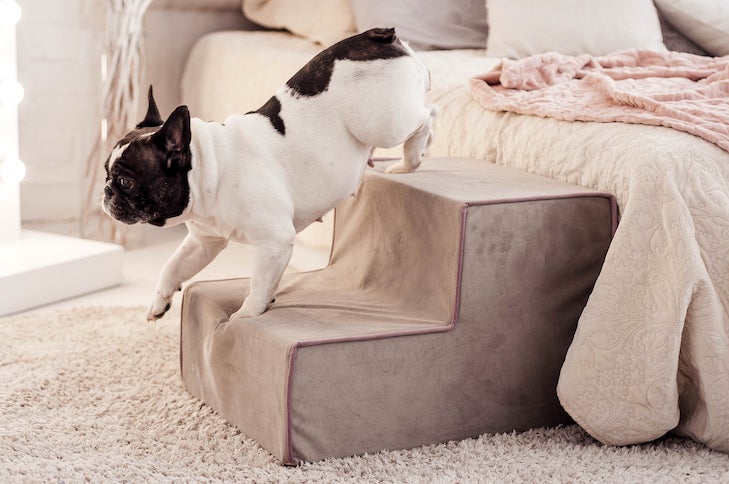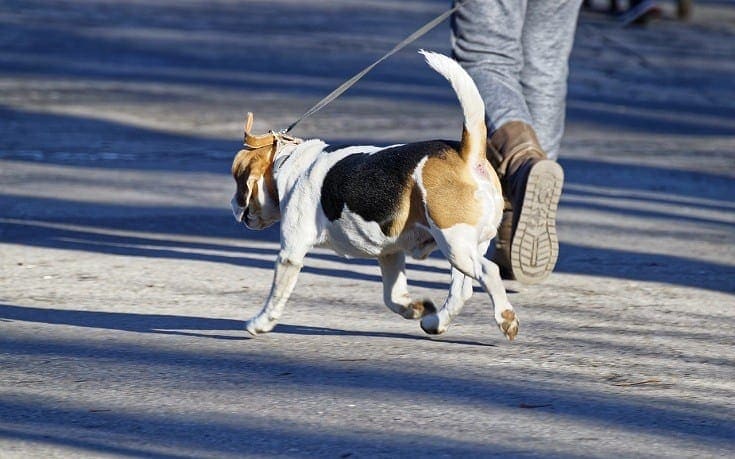Clubs Offering:
We love spending quality time with our pups. But there may be days when we wonder, “Why does my dog follow me everywhere?” The answer has to do with your dog’s animal instinct, pack mentality, and a few other variables.
Canine companions that follow their humans everywhere are often referred to as “velcro dogs” because of their desire to be attached to your side. “Dogs are pack animals, and we are their pack,” says Sally Morgan, author and holistic physical therapist for pets and people.
While having your dog follow you everywhere might seem cute and lovable, it can be an indication that something else is going on. According to Dr. Rachel Barrack, licensed veterinarian certified in veterinary acupuncture with Animal Acupuncture in New York City, there are scientific reasons behind dogs’ clingy behavior. “Young puppies (anywhere from birth to 6 months of age) can often imprint on their owners and look to them as they would their mother,” says Dr. Barrack.
Another reason your dog might stay close to your side is positive reinforcement. “If every time you are with your dog, he gets affection or treats, he’s likely to follow you around more often,” Dr. Barrack says. If you’re flattered by this affection, and reward your dog for being clingy, you’re sending him a message that the behavior is welcome.
Because dogs respond to their owners’ behavior, it’s important to examine your relationship. For example, if your dog sleeps in your bed, you might be creating a dependency and reinforcing his need to be close to you at all times.
In households consisting of multiple people, there’s a good chance your dog will become fixated on one person in particular. Sometimes it’s the primary caregiver who provides food and walks or the fun-time human who plays tug-of-war, a game of catch, or hands out endless amounts of treats.
“Look at it from the dog’s point of view,” says Erin Kramer, a professional certified dog trainer and owner of Tug Dogs in Northern California. “You might think you’re the cool one, but the person your dog is attached to is the road to everything wonderful and magical. The focus is on that person because of what they give access to.”
A dog’s life experience before entering your home can play a big part when it comes to being fixated on one person, especially for dogs who have been rescued. What was their life like before they came to live with you? “Those previous experiences have an impact on a dog and can contribute to the lingering fear of abandonment,” says Dr. Barrack.

It’s not uncommon for certain breeds to over-attach to their owners, particularly dogs in the working or herding groups that are bred to work side-by-side with their humans. “It’s a trait that’s prized and bred into their genetic history,” says Kramer.
If your dog is overly attached, it’s important to figure out whether this velcro behavior is part of his personality and breeding, or if something more serious is going on. For example, an older dog may be losing his sight or hearing, becoming more fearful of the environment and dependent on having you near.
“A dog that suddenly becomes very clingy may be suffering from a physical ailment and keeping you in reach for comfort. A checkup by the veterinarian is a good idea if this happens,” says Dr. Jerry Klein, AKC chief veterinary officer.
Could a dog who is attached to you at the hip be showing signs of separation anxiety? While they’re both associated with not wanting to be away from an owner, there are some distinct yet subtle differences between these two forms of behavior.
The big difference between separation anxiety and being a velcro dog is anxiety itself. While velcro dogs prefer to be glued to their owners, dogs with true separation anxiety actually panic when they’re away from their owners.
Velcro dogs may be more susceptible to developing separation anxiety, but it doesn’t automatically mean they will. However, it should serve as a wake-up call to address the behavior before it reaches the point where your dog can’t function without you in the picture.
There are various approaches owners can take to help a dog who exhibits these traits. What is best is a dog who loves your attention and being close to you, but is fine when you’re not around.
Many of us get a dog so we will have a constant companion. Your dog deserves your love and attention, and it’s up to you to find a healthy balance for time together and apart. https://www.akc.org/wp-admin/admin-ajax.php Get Your Free AKC eBook
What are the Reasons Why My Dog Follows Me?
If your dog follows you around constantly, you will likely either find it incredibly endearing or you will be tired of almost tripping over him all the time. Either way, it helps to understand some of the science behind why your dog certification might be constantly at your side.
Reinforcement. Often dogs will follow their owners if their bond is paired over time with a great deal of reinforcement. For example, if a dog learns that good things, such as food, pats, and fun activities come from a particular person, they may be more likely to follow that person.
Breed traits. Some breeds, especially those that have been bred for centuries to work with people, are more likely to be “velcro dogs.” A velcro dog is one that follows you around and wants to be by your side at all times. Often called clingy, velcro dogs have a desire to be close to their owners.
Companionship. Perhaps the most obvious reason, some dogs simply prefer the companionship of their human owners. Over the process of domestication, natural selection has shaped dogs to become companions for humans. Domesticated dogs are now ‘bonded’ with humans in some of the same ways as children. In this sense, our bond with dogs is one that has evolved over the course of domestications.
Separation Anxiety. Separation anxiety is triggered when dogs become upset because of the separation from their owners. Dog separation anxiety is often unknowingly encouraged by dog owners. We make a big fuss when we leave or come home, and in doing so we reward the dog’s concern with our absence, provoking in him even more stress every time we leave.
Plan for More Exercise Sessions
To keep the mental stimulation up, increase their times of physical activity. A tired dog will have reduced interest in following you all day.
You can also stimulate their minds by providing interactive toys such as puzzles. Also, have enticing chew toys to keep them engaged. In between your workday, you can take breaks to walk the dog.

Cesar Explains How To Fix Separation Anxiety With Your Dog
When I was growing up, we had a female dog who suddenly turned extra clingy; it was like an overnight change. What follows are my recollections of the change in behavior, and additional research I’ve done into why dogs can become so attached all of a sudden.
It includes the reasons for the attachment and super clingy behavior, and then steps you can take to help your dog through this period.